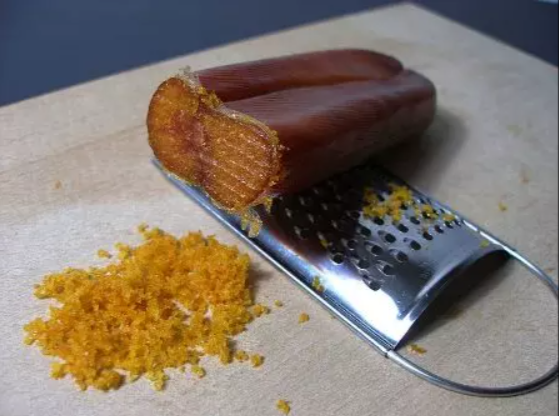Our Fish
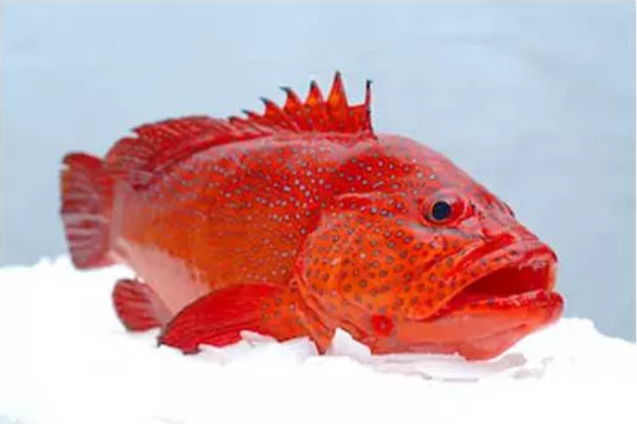
Blue spotted Grouper
Serranidae (grouper family) having a single dorsal fin consisting of an anterior part with nine spines and a posterior part with 13-15 soft rays; the anal has three spines and 9-10 soft rays. Its livery makes it possible to recognize it without doubt: the coloring is in fact vermilion red very bright, dotted with many small blue ocelli. There is a variety in the bright black livery, also marked with blue dots. It is a small littoral species, very common along the western coast of Africa. His flesh is excellent.
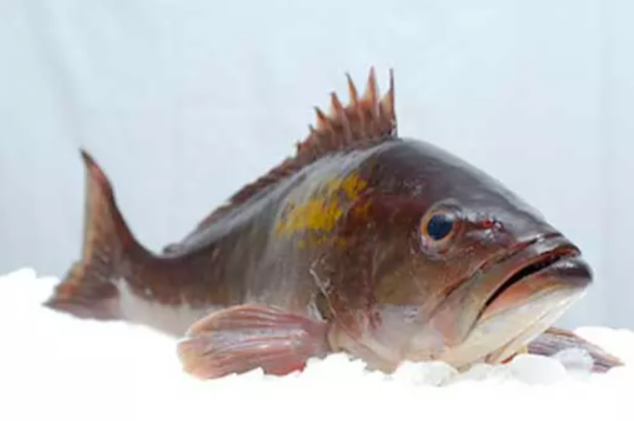
Blacktip Grouper
It is a coastal species of rocky bottoms. All groupers are formidable predators, they hunt on the lookout and are able to relax, leaping on their prey they engulf in their huge mouth. Fished at the line, their flesh is excellent.
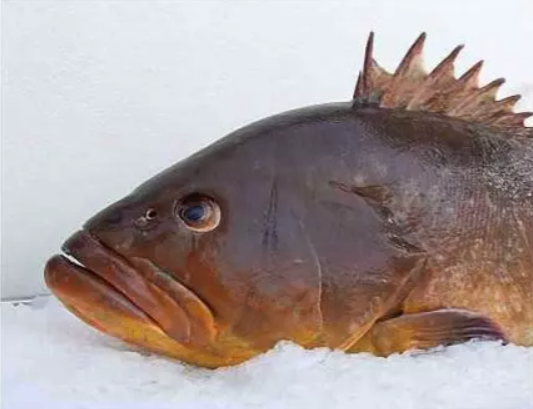
Dusky Grouper
Dusky grouper, Epinephelus guaza are demersal fish, belonging to the family Serranidae, They have a thick head, prominent eyes, oval and massive body covered with small scales and a unique dorsal fin.
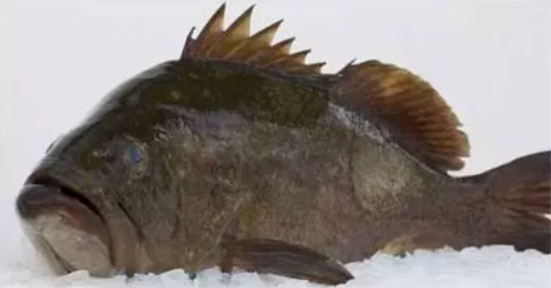
Mottled Grouper
Mottled grouper, scientific name Mycteroperca rubra, belongs to the family Serranidae. It has a sharp head and a body hurt with clear spots developed at the level of the stomach.
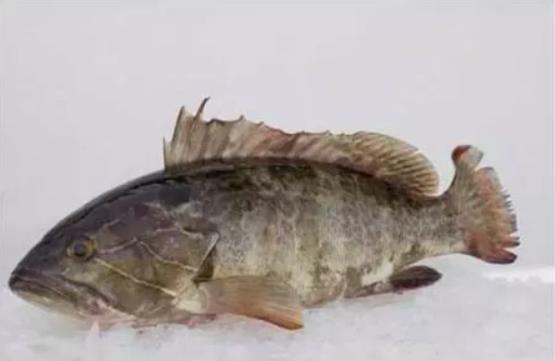
White Grouper
White grouper, Epinephelus aeneus, are demersal fish belonging to the family Serranidae.They have a elongated grey-greenish body, sometimes brown. There are recognized by Three white lines, two at the back of the eye, and the third in the jaw.
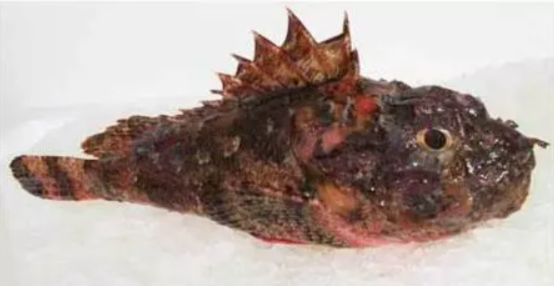
Black scorpionfish
The scorpionfish are Perciforms with a squat and spiny body, covered with rough scales. The head is cuirassed with plates and bony ridges and armed with strong horns. The dorsal is unique, it has an elongated spiny part and a smaller soft part; the anal is provided with 3 spines. The cauda fin is rounded at Scorpaena porcus. They are coastal or deep benthic fish. Widely distributed in all the world’s seas, they are particularly diversified in the Indo-Pacific. They are confined preferably on the rocky bottom to which they integrate thanks to their mimicry. Thus hidden, they hunt on the lookout for small fish and crustaceans passing within their reach. The spines of the scorpionfish have, at their base, a venom gland making their bites dangerous but not fatal, at least among the Atlantic species. Their flesh is edible and very popular for the preparation of fish soups.
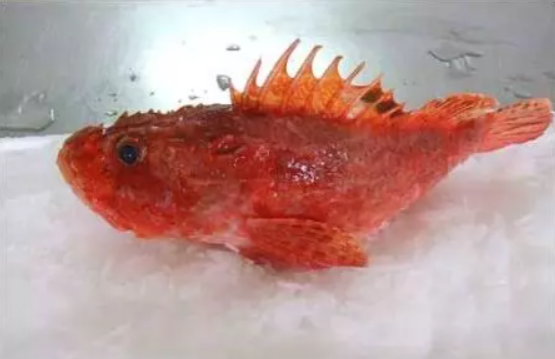
Large scaled Scorpionfish
The scorpionfish are Perciforms with a squat and spiny body, covered with rough scales. The head is cuirassed with plates and bony ridges and armed with strong horns. The dorsal is unique, it has an elongated spiny part and a smaller soft part; the anal is provided with 3 spines. The caudal in is rounded at Scorpaena scrofa. They are coastal or deep benthic fish. Widely distributed in all the world’s seas, they are particularly diversified in the Indo-Pacific. They are confined preferably on the rocky bottom to which they integrate thanks to their mimicry. Thus hidden, they hunt on the lookout for small fish and crustaceans passing within their reach. The spines of the scorpionfish have, at their base, a venom gland making their bites dangerous but not fatal, at least among the Atlantic species. Their flesh is edible and very popular for the preparation of fish soups. Scorpaena scrofa is a fish that can each 40 cm long. His body is stocky; his massive head is covered with many rags of skin. His eyes are surmounted by a short tentacle and his mouth is very wide. Its dorsal fin is indented, going from head to tail. The anterior part of this fin has hard spiny rays containing a virulent venom that can inflict extremely painful stings.
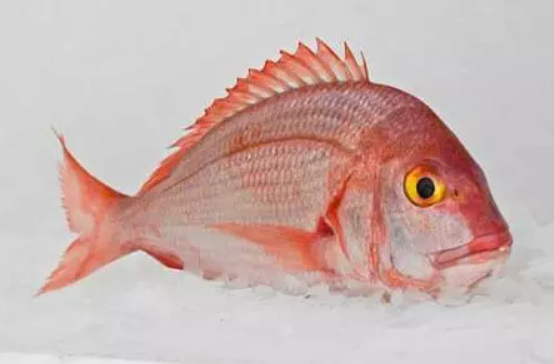
Angolan Dentex
Angolan Dentex
This species belongs to the family Sparidae. Sparidae are generally high and compressed body-shaped perciforms, usually with a high and typical frontal profile. The essential characteristic of Sparidae is their dental differentiation and heterodontics. In this family, there is a specialization of the dentition according to the diet of the species: thus the herbivores like the Dentex , the bug and the saupe, carry incisors flat and sharp, the predators, such as the teeth They are minis of hooked canines, and the eaters of crustaceans and shells, as in the case of the pagres, are provided with grinding molars, and lastly the pageots, the eaters of debris, have a dentition similar to that of the porpoises, but less powerful. Another peculiarity of the Sparidae is their frequent hermaphroditism: the individuals can be at first male then female like the Dentex (protandry) or, inversely, female then male like the pageots (progyny). The Angolan tooth is a very common species of the eastern tropical Atlantic. Its eyes are relatively large; the iris is most often bright yellow. He lives on sandy mud bottoms, between 15 and 300 m. It is a small tooth, it can reach 35 cm long.
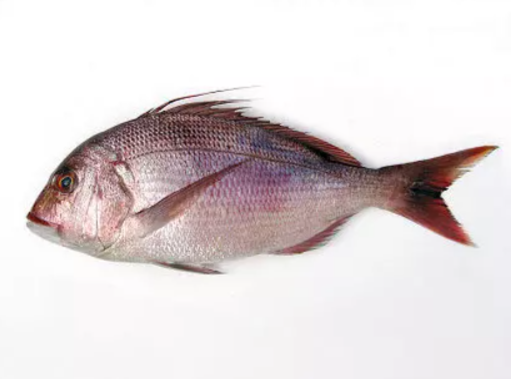
Canary Dentex
Canary Dentex
A coastal marine fish from the tropics, which occasionally frequents estuaries and coastal lagoons. From gregarious manners, small species form important banks, while large ones move in groups of a few individuals. Their flesh is excellent. The species is coastal and ranges from 20 to 110 m on muddy, sandy or rocky bottoms. It is typically West African: its range is from Morocco (Cape Bajador in Western Sahara) to Angola. It can reach 50 cm long for larger individuals.
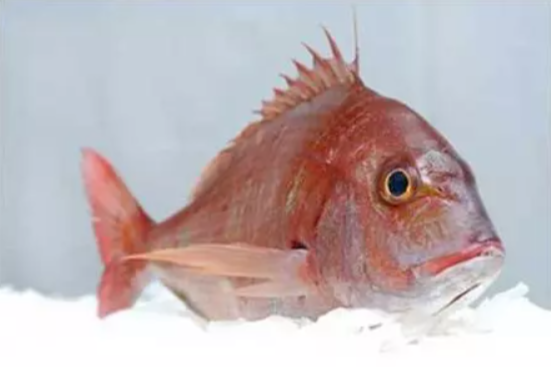
Pink Dentex
The teeth are all pointed and conical and there are 4 to 6 canines in front of each jaw. The first two spines of the dorsal are very short, the third, fourth and fifth are long and slender, at least in the young; in the elderly, these thorns become dull, but there is a strong hump on the forehead, hence the name of Gibbosus. The body is pinkish, more or less reddish, without stain at the base of the last rays of the soft ridge, or very much reduced; on the other hand, there is a dark spot at the origin of the lateral line and the caudal fin is bordered by a fine black border. It is a coastal species of sandymuddy or gravelly bottom, between 30 and 200 m deep. Individuals of current size (30-50 cm) are taken on the bottoms of 30 to 50 m. Large individuals catch on the line and long-line from 80 m depth. The species can reach 100 cm and 15 kg. It is known in the Mediterranean and on the Atlantic coast, from Portugal to Angola.
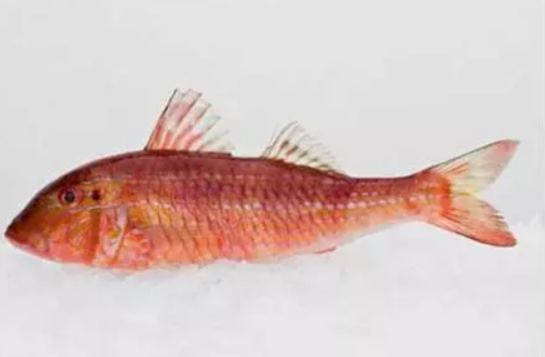
West Africain Goafish
They are Perciforms with an elongated body, slightly compressed, with a clearly convex back profile, especially at the forehead, and an almost rectilinear ventral profile. They are covered with large, smooth scales. The mouth, small and subterminal, is slightly protractile; the chin has two long barbs that can be lodged in a gutter. The mullet is usually brightly colored, the dominant hue being red, hence their name. They are benthic fish from tropical and temperate seas. They are fond of soft, muddy and sandy bottoms. Their barbs are sensory and gustatory organs, which serve in the search for prey: worms, crustaceans and molluscs. The red mullet has a pretty pink-red livery striped with thin longitudinal stripes. The species is common along the coasts of tropical Africa, from Morocco to Angola. It is present on the Mauritanian and Senegalese mud bottoms, between 25 and 75 meters deep. Production is almost entirely reserved for export to European markets. They are solitary or in small groups, their flesh is excellent.

Lobster
This large crustacean (marine animal), with no forceps, measures up to 50 cm and weighs up to 4 kg.The segmented body is covered with a reddish to brownish carapace with two yellowish spots on each abdominal segment. Legs and antennae are striped with brown and yellow. The head is covered with strong spines and bears two compound faceted eyes protected by two triangular frontal horns, two small antennae , two antennae directed rearward and longer than the body, two mandibles crushing and four jaws with blades sharp.
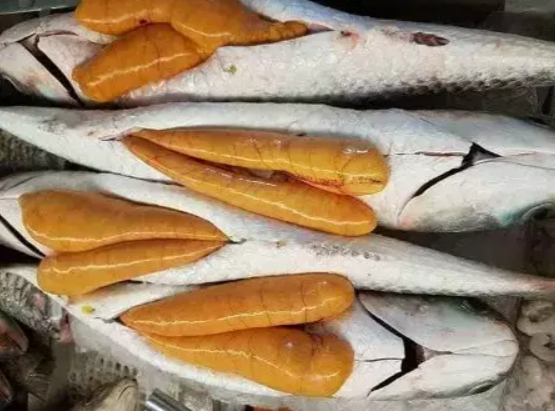
Mullet Eggs
The Mullet Roe or Mullet Eggs is is the is the lump of tiny eggs of the flathead grey mullet. The flathead grey mullet (Mugil cephalus) is an important food fish species in the mullet family Mugilidae. It is found in coastal tropical and subtropical waters worldwide. Its length is typically 30 to 75 centimeters (12 to 30 in). It is known with numerous English names, including the flathead mullet, striped mullet (US, American Fisheries Society name), black mullet, bully mullet, common mullet, grey mullet, sea mullet and mullet, among others.
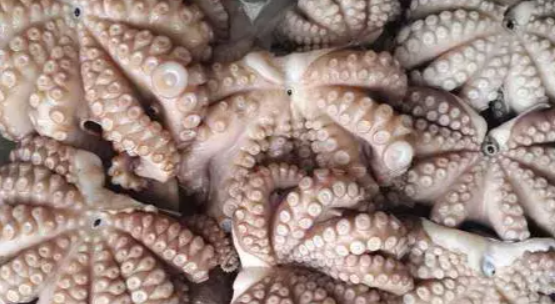
Octopus
Octopus is a benthic species that is characterized by direct development, a short life cycle, high motor intelligence and high visual acuity. Its coloration is variable according to the environment, which can pass rapidly from brown to green to yellow and white. His body has a warty aspect. The octopus has eight tentacles of the same length, each with two rows of suction cups that are used to capture prey or to move to the bottom. At the base of the tentacles is the siphon which allows to propel itself quickly by reaction. In Mauritania, octopuses live on all types of bottoms with a preference for fine to coarse sand sediments. She digs shelters in these soft bottoms to protect herself from predators; the cephalopod itself digs its burrow that it leaves only to feed and reproduce.
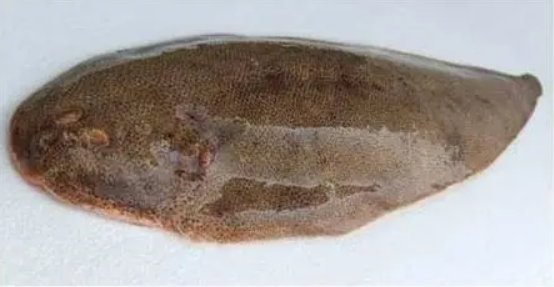
Guinean Sole
The word “sole” means “sole of the foot”, “sole” derived from the Latin solea, which means sandal. A Legend tells that Neptune, god of the seas, one day inadvertently walked on a fish. This fish looked like all fish, with one eye on each side. The fish woke with a start and panicked, stung the divine foot with its sting. Neptune, very angry,would have flattened his foot,taking off his poisonous sting,giving him his amazing oval shape and install eyes on the same side of the body, right. Neptune condemned the unfortunate fish to reproduce thus. This legend does not prevent the sole from being one of the finest fishes ever, with delicate, white and firm flesh. It is a very coastal species, particularly abundant on sandy and sandy muddy bottoms, because forced to hide to protect itself can go completely unnoticed. Its tolerance to desalination of water is important, it meets all year in the estuaries. During the day the sole burrows in the sand or the mud, at night it feeds by feeding on organisms living on the bottom (worms, crustaceans, small shells, …).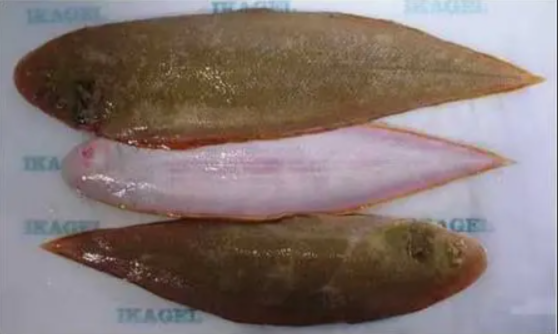
Tongue Sole
It is a very coastal species, particularly abundant on sandy and sandy-muddy bottoms, because forced to hide to protect itself can go completely unnoticed. Its tolerance to desalination of water is important, it meets all year in the estuaries. During the day the sole burrows in the sand or the mud, at night it feeds by feeding on organisms living on the bottom (worms, crustaceans, small shells, …). Its growth varies according to the latitude, but that of the female is always faster than that of the male. Each female lays several tens of thousands to more than one million eggs depending on her size. Fished in abundance from February to the end of April and from September to the end of November, they have a short life span.
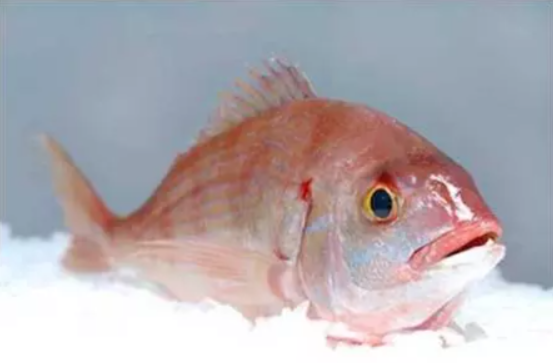
Red Bandora fish
It is a small Sparidae (dorado family) with an oblong and compressed body with a frontal profile less gibbous than that of dorados (porgies and pears); the muzzle is truncated and the teeth are carded on the front of the jaws which carry 8 teeth a little longer and pointed; the lateral teeth are molariform and small. The scaling on the head exceeds the level of the middle of the eye. The body is pink with silver highlights, with some blue dots on the back and vertical reddish bands on the flanks that disappear quickly after death. It is a species of muddy and sandy muddy bottoms that are found between the coast and 150 m deep. It is typically West African and very common from Mauritania to Angola.
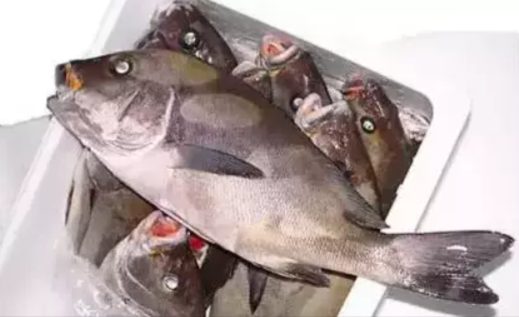
Rubberlip Grunt
The body is compressed laterally and the forehead high like that of a bream, but the mouth is small with large lips. The dorsal fin consists of 10-13 spines and 17-20 soft rays. The coloring is uniformly gray-violet more or less dark in adults, the young have broad bands alternately clear and dark.
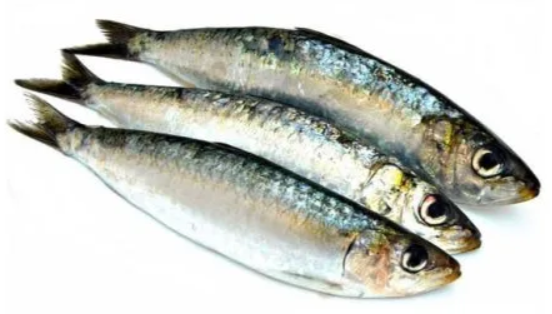
European pilchard
Sardine (Sardina pilchardus) is a fish species of the family Clupeidae (which also includes herring, shad, etc.). According to the region, it takes the names of celery, pilchard, royan, sarda, sardinyola. It is the only species of its kind. Its name comes from Sardinia because the Greeks had noticed that it abounded in its coastal waters.
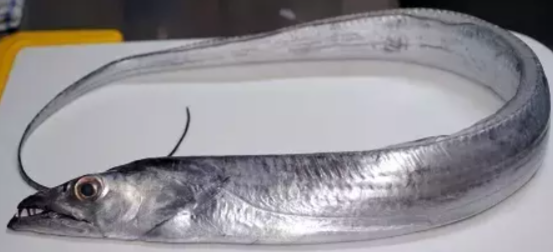
Silver Scabbard fish
The body is very long and strongly compressed laterally. Its section is reminiscent of a saber, with a longitudinal depression at midheight of the flanks. The dorsal fin leaves behind the head and reaches the caudal peduncle. It starts with 9 spiny rays raised. The anal also has 2 thorny rays; the first being like a heart-shaped shell, just like the spine that makes up each pelvic bone. The head has very big eyes and a jaw that would make a Barracuda turn pale! The dentition is composed of strong teeth sharp and spaced; the front of the jaws is equipped with long pointed and inwardly inclined teeth, much more developed (about 15 mm) and more in the upper jaw. The branchial arches also have many teeth (gill rakers) just as sharp. The skin of Lepidope is very smooth and covered with a pearly pigment which is easily detached. The whole body is silver and pearly. Lepidope is a benthic predator that feeds on fish and invertebrates. He lives at depths greater than 50 meters. During the day, its activity is less than the night and it happens to see many individuals hunt on the surface after sunset.
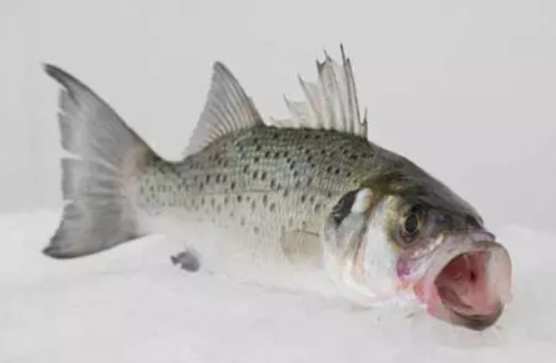
Spotted Seabass
The form is slender, the color brilliant; the belly is silvery and the back is steel gray with small rounded dark spots. Especially common fish in coastal areas, in well-oxygenated waters, the rocky coastline, and near sandy beaches with breaking waves. Juveniles frequent estuaries and berries at a younger age before reaching deeper coastal waters. If young people eat small crustaceans, adults look for small fish, crustaceans (shrimps, small crabs) and cephalopod molluscs (squid, cuttlefish …). This species, common, hardly exceeds 50 cm; the most common size varies between 25 and 35 cm. It is usually found under the improper name of “sea trout” in the Mauritanian markets. The neighboring species, Morone labrax, known under the names of Atlantic bar or Mediterranean wolf, is more northern and does not exceed the Moroccan coasts.
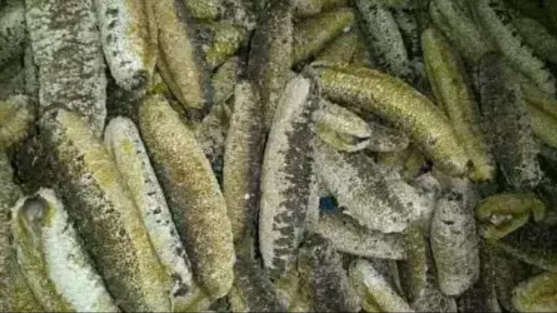
Sea cucumbers
Holothurians (Holothuroidea) are a class of marine animals from the branch of soft, oblong echinoderms, with a circle of tentacles around the mouth. They are also called sea cucumbers. These animals, mostly benthic live, depending on the species, from the surface to the abyss. Sea cucumbers are usually 10 to 30 centimeters long, but some species like the Moorish cordon can exceed 3 meters.
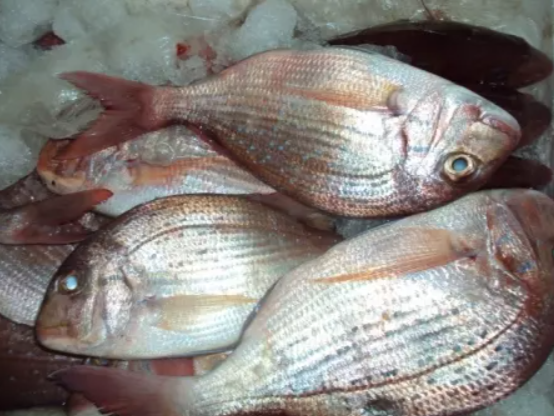
Blue Spotted Seabream
An inter-tropical species belonging to the community of Sparidae. It is a jaw-filled canker with 4 to 6 strong anterior canines and 2 lateral rows of molariform teeth. The first 2 spines of the dorsal fin are very short, the third, fourth and fifth are tapered and much longer than the following, especially in the young. The body is pink without dark transverse bands and, on the living, the dorsal region is studded with bright blue dots. Young people are generally more coastal than adults. It is a species found from the coast (20 m depth) to the edge of the continental shelf (200m) on the sandy-muddy or rocky bottom. The species is common from Portugal to Angola and exists in the Mediterranean. This species lives preferentially in cold waters; its bathymetric distribution varies between 10 to 80 m according to the temperature. Most of the catch is taken by the artisanal fleet.

Two-banded Seabream
The incisors are 8-10 in both jaws, they are lined with small granular teeth; the molars are arranged in two rows. The coloration is variable but the flanks always have golden yellow longitudinal bands in the very which disappear then. The neck and the caudal peduncle bear a very pronounced blackish brown band; the peduncular band is at the base of the soft parts of the dorsal and anal fins. It is a littoral species of rocky and sandy bottoms, known in the Mediterranean and Atlantic,from the Bay of Biscay to Senegal, also exists in Madeira and the Canary Islands. It can reach 25 to 30 cm long (500g).
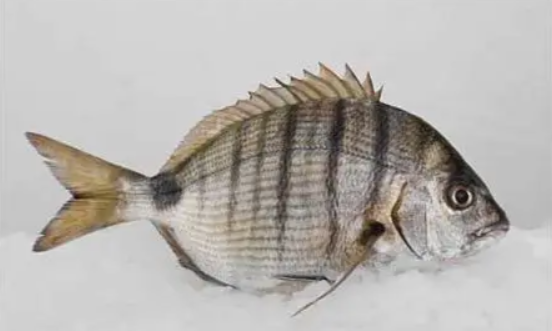
White Seabream
The White Seabream are Sparidae with an oval body, compressed and raised. Their jaws have incisors inserted more or less obliquely into “horse teeth”, and followed or not small granular teeth. The flanks are silver-gray, with 5 distinct dark stripes between which other faded stripes are noticeable; there is no band on the neck, but a more or less circular spot, often saddle shaped on the caudal peduncle. The species frequents the littoral rocky bottoms, in search of algae and associated small fauna.
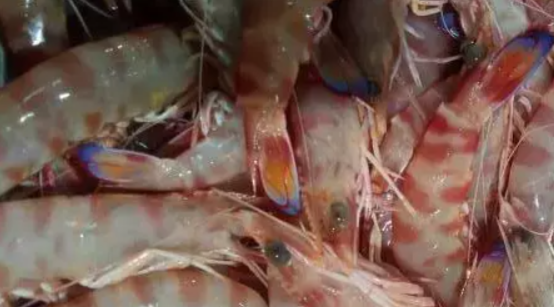
Shrimp
The vernacular name shrimp (also known as chevrette in some areas of the French-speaking world) is traditionally given to a set of aquatic crustaceans, mainly marine but also freshwater, formerly grouped under the sub-order “swimming decapods”, or Natantia.
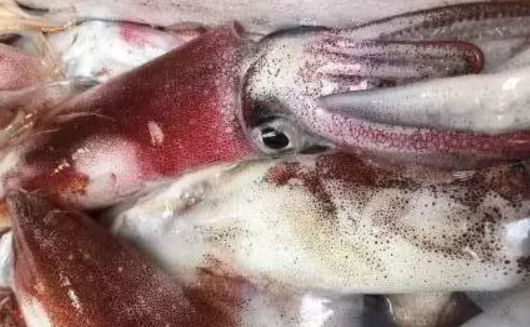
Squid
Squid or teuthids (Teuthida) are a morphological group, appeared in the early Jurassic, cuttlefish-like marine decepod cephalopods with about 300 species. Most species do not have a specific vernacular name and are therefore designated in French under the generic name “Calmar”. The same is true of the term squid, another vernacular name more particularly used when these animals are considered as edible or fishing bait, but which also designates other cephalopods, such as cuttlefish. These animals have long been grouped together in the scientific classification in the order of the Teuthida, but this one turns out to be paraphyletic and the “squid” (according to the morphological definition) are thus broken up between the orders of Myopsina and Oegopsina, the second being much larger.
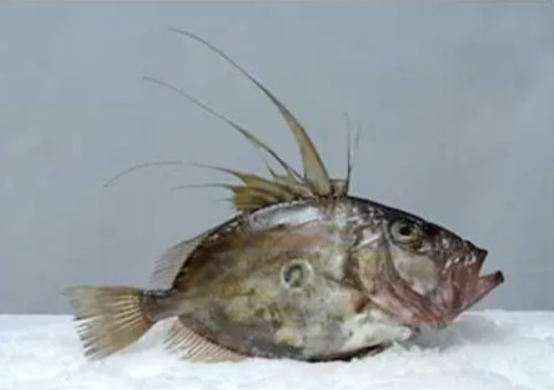
St Peter’s fish
It is a geographical variety of the European St. Peter, Zeus Faber. The bodies are oval, strongly compressed, covered with very small smooth scales. There is a series of thorny patches at the base of the dorsal and anal. The spiny rays of the dorsal are extended into long filaments. The general color is bluish gray more or less silvery, brownish on the back; the flanks have a characteristic black ocelle, haloed with light yellow. According to the legend, it would be the fingerprints of Saint Pierre, while he took the fish to remove a piece of gold … Zeus Faber Mauritanicus exists from Mauritania to South Africa. It is common, but never abundant. It frequents funds of variable nature: mud, sand and rock, between 75 and 250 m deep. The St. Peter’s are predators; they snag the small pelagic fish by means of their large extensible mouth.
